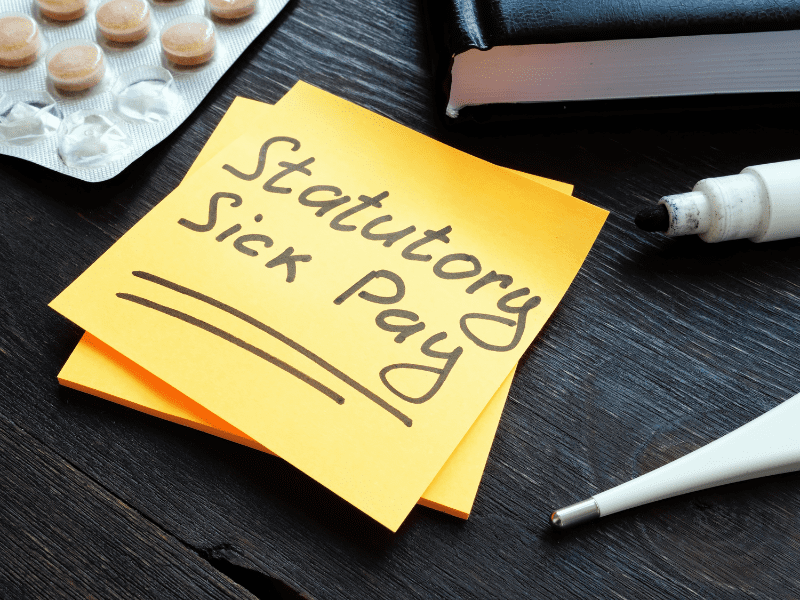
Have you ever wondered about what statutory sick pay is and how it works? Statutory sick pay can sometimes seem taxing, but this shouldn’t have to be the case. Luckily, our experts have outlined some of the key things you should know about statutory sick pay today to help.
But remember: if you need any extra guidance, your friendly “accountant near me” should help you find out more. Alternatively, our team can help with any questions about sick leave and employee rights you might have.
What is Statutory Sick Pay?
First, we need to define what statutory sick pay actually is. SSP, is a payment made by employers to employees for long-term sickness, causing them to be off work. More specifically, as part of their employee rights, workers are eligible for statutory sick pay after three consecutive days off. SSP then continues for up to 28 weeks off work, but not thereafter.
Statutory sick pay is paid by each employer of an individual. As such, if someone is eligible for sick pay and they hold multiple jobs, they receive SSP from each employer.
Statutory sick pay replaces the payment you would typically receive from your job role if you are unable to work. The rate of pay is a set amount, meaning your normal earnings do not influence how much you receive.
What is the Current Rate of Statutory Sick Pay?
The current rate of SSP is £109.40. Thus, if you claim the maximum amount of statutory sick pay (28 weeks), you’ll receive just over £3,000.
It’s worth noting that statutory sick pay is not available for all employed workers. Those who are ineligible will not be paid any SSP. In these cases, they may need to consider other options financially, such as Universal Credit.
Who is Eligible for Statutory Sick Pay?
To be eligible for SSP, the employee may earn above the lower earnings limit (meaning they make national insurance contributions). They must also have been off work due to illness for longer than three days (but less than 28 weeks). In other words, statutory sick pay is paid from the fourth day of illness.
However, there is no differentiation between part-time and full-time workers; this means that individuals who only work 20 hours per week will be eligible for the same pay as those working 40 hours per week.
It’s worth noting here that an employee’s eligibility for SSP may depend on their previous sick record. For example, if the employee previously received SSP (within the last eight weeks), they may be paid only for the first three days of being unwell. Moreover, those who have had continuous linked sick pay periods (four days or longer) of less than eight weeks apart within the last three years will be exempt from future SSP.
Another point of note is that self-employed individuals and contractors are not eligible for SSP. In fact, statutory sick pay is only available for employed individuals.
What is the Difference Between Sick Pay and Statutory Sick Pay?
Sick pay and statutory sick pay can seem similar. However, there are very significant differences. Sick pay generally refers to the company’s specific sick pay scheme. Most employees will be covered by one. However, if not, the employer will need to pay the employee under the SSP scheme (if the employee is eligible).
If the employee is not eligible either for the business’s sick pay scheme or SSP, they may not be paid.
Do I Need to See Evidence for SSP?
If an employee is off work for longer than seven consecutive non-working days, they’ll need to provide a fit note. These are available from several healthcare professionals. Most often, people will obtain these from their GP or hospital doctor. However, it can also come from several other healthcare professionals, including nurses, and the like.
Most employees will provide a fit note for sick leave. If this is not possible, they may also be able to give an Allied Health Professional Health and Work Report. These are provided by other healthcare professionals, such as podiatrists or physiotherapists.
While you will need to see evidence, it’s also worth keeping in touch with the employee during their illness. Indeed, the employee may be well enough to return to work, so it’s worth keeping in touch regularly.
How Do I Pay and Report SSP?
If you have an employee who needs SSP, you’ll pay this at the same time as normal payments. You will also need to inform HMRC about the payments being made to the employee. This can be done when submitting your payroll reporting.
In some cases, the payslip may include both SSP and regular hours. Make sure this is clearly defined when creating the payslip so that there is no confusion regarding payment.
What Happens if Sick Pay Runs Out?
After the 28 week period for statutory sick pay, the employee will no longer be eligible for SSP. This also applies in cases where the employee has taken 28 weeks of SSP during linked periods over three years.
When sick pay is due to end, the employer must send the employee form SSP1. This is due either on or before the start of the 23rd week when SSP ends before the illness. Alternatively, if the SSP ends while the employee is still sick/unexpectedly, this should be within seven days of ending.
In these cases, when sick pay runs out, the employee may need to consider their options going forward. They may be able to get employment and support allowance or universal credit, depending on their situation.
Final Thoughts
If you have been looking to learn more about SSP, ensuring you’ve got professional support is vital. So, don’t leave it to chance; if you have any questions, our friendly team of accountants near you can help.
After all, it’s a legal requirement to pay statutory sick if your employee is entitled to it; thus, making sure your staff are covered is integral. Indeed, if you don’t provide SSP when the employee is entitled, you could be fined for unlawful dedication from wages.




